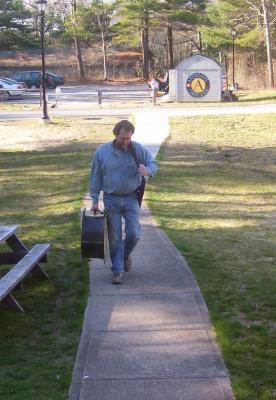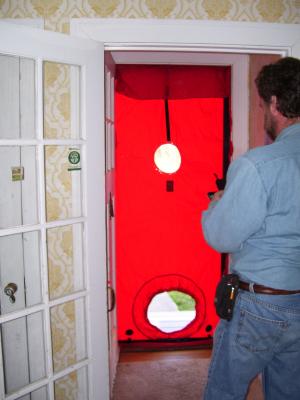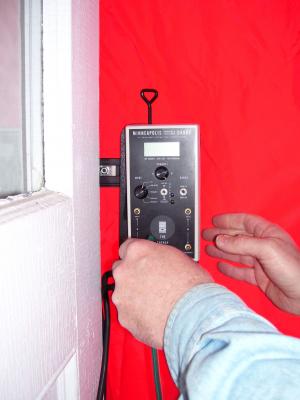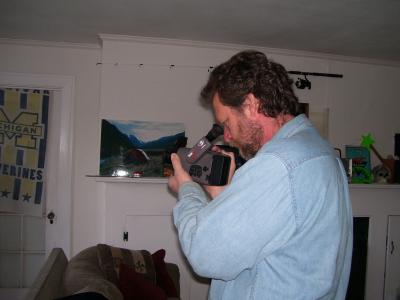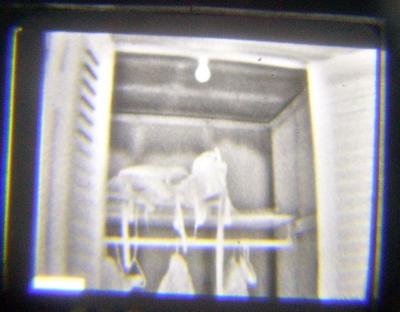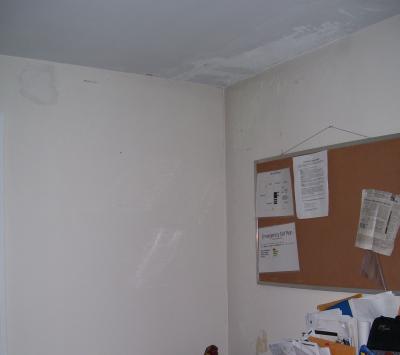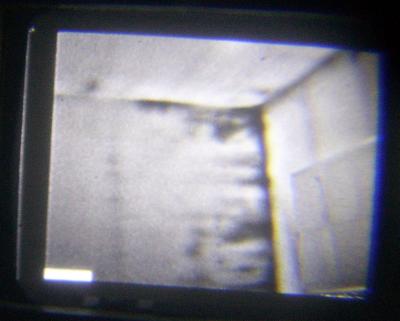Improving home efficiency can mean many things. You could get a more efficient heater, perhaps you install new CFL light bulbs, maybe you get some weather sealing around the doors. Making your home more efficient will save you money, and make your house more comfortable to live in.
With this in mind, we recently had Bruce Torrey, from Building Diagnostics (you might have seen him on This Old House a couple of weeks ago, the episode is still playing in some areas, do a google search to find it in your area). He brought his blower, and his thermal camera, and a lot of experience.
We live in a really old, and drafty, home. We have already sealed up most of the “obvious” problems. We have had the attic insulated, the foundation sealed up, the doors weather stripped and a lot of cracks sealed. Yet it was still cold and drafty in the winter, we also wanted to save some cash on heating fuel. We knew that the remaining problems were going to be harder to find, so Bruce went to work.
The first thing we did was crank the heat up to 72. This was because it was getting warm outside and we needed a temperature difference between the inside and the outside so that the thermal camera would work better. Next Bruce set up the blower door.
The blower causes the home to have a negative pressure, letting us see with the thermal camera (and in many places feel with our hands) the cold air from outside rushing in. We set the blower to maintain a constant pressure. This allows us to see just how much air the house is exchanging with the outside. This will give us an idea of just how “leaky” the home is. Obviously you want some air to come and go, but if its too much it could mean a lot of cracks that need sealed up.
Once we let the blower run for a while and had achieved negative pressure with the outside, we got out the thermal camera.
While many of the drafts were very easy to detect with your hand (a lot of air was coming in, no wonder the kitchen was always so cold!), some were impossible to find without the camera. For instance a closet in the upstairs that never had any drafts needed a lot more insulation.
The dark areas represent “cold” and the white “hot”, as you can see the studs are the warm white lines. They are transmitting heat from the inside to the outside, the dark areas are the cold air from outside flooding into the closet (also note the non-CFL light, which has since been changed to a CFL, we had no idea one of these guys was still in there, yet another benefit to getting your home evaluated). Most walls show the opposite, with the studs being “cold” and the walls “hot”. This is because in a well insulated wall the studs are the easiest way for the heat to be transmitted outside, hence they show up colder.
We also discovered some interesting facts. For one between the first and second floor there is no insulation around the outside of the home. This means that all around the outside of the house cold air is seeping in and causing the home to be cooler. This will be fixed by blowing insulation in around the outside of the home.
You can also find “interesting” construction practises from long ago. For instance this corner in the upstairs room seems to be leaking cold air across the wall, most likely from an “interesting” configuration of the 2X4’s on the outside wall. Without the thermal camera we would have never found this (without ripping the walls off).
You can clearly see the black “cold” seeping in. All over the house we found little cracks that need to be sealed up with painters caulk, some blown in insulation, or some weather sealing. We found that the windows were in pretty bad shape. But the good news is the window casings are still pretty solid, that means we can put plastic over the windows and achieve a sizable reduction in heating cost, as we try and find some money to replace the windows.
Bruce is an expert when it comes to this sort of thing. Reading a thermal image camera takes experience. If you are interested in getting a similar test done in your area make sure the contractor has done this sort of thing before. The report Bruce prepared for us tells us exactly what needs to be fixed, he even recommended some local people to do the job. I will keep you updated.
